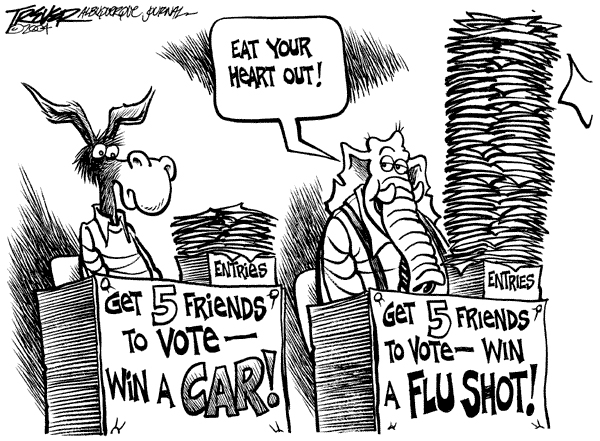The panel began deliberating Monday. One member, John D. Arras, a professor of bioethics at the University of Virginia, said the group might eventually tackle the question of whether babies should have priority over the elderly in receiving the flu vaccine, or vice versa. Another question the panel might have to decide is whether, in the event of a pandemic, members of crucial professions - perhaps even undertakers - should receive priority. . . .Arras points out that Americans aren't terribly comfortable with the "R"-word, but extreme shortages in the vaccine (worse, in all likelihood, than HHS officials first let on) will require explicit rationing. This apparently is the first time the CDC has empaneled a group of ethicists to guide public health decision making.The disease control agency has already decided that broadly speaking, only the very young, the very old and the chronically ill should receive this season's limited supply of flu vaccine. But state and local health officials have complained that shortages of the vaccine are so dire that they do not have enough to inoculate everyone in those categories. While they have been making decisions themselves about who should receive priority, these officials say they want better guidance from the agency as to who is the highest of the high-risk. . . .
So far, the agency has declined to narrow its list, but Dr. Gerberding said that might change. And because choosing among high-risk groups involves ethical as well as medical issues, she said, she decided that she needed the help of ethicists.
Some of the choices presented to the panel by state and local public health authorities aren't going to be easy:
The decision to bring in ethicists is probably wise, though not for the reasons publicly expressed by the CDC. The idea that public health decisions are being made for political reasons -- hardly a shocking development for students of public health -- isn't going down well with the public whose health is implicated by these decisions. The creation of an ethics panel to help make allocation decisions will at least provide some political cover for the CDC, which can ill afford the taint of politics in this very political year.Dr. Arras said one health official at the meeting was grappling with the question of whether to vaccinate all residents of his state's nursing homes.
"Some of those people in nursing homes will be extremely old, extremely debilitated and also demented," Dr. Arras said. "The question arises, Where is the vaccine better deployed?''
Public health officers in North Dakota were able to agree that chronically ill patients in the state's nursing homes should be vaccinated first. The decision was reached for medical and practical reasons, said Larry Shireley, the state epidemiologist: such people not only are at great risk of contracting the disease, Mr. Shireley said, but also are easy to reach.
But state health officers could not agree, he said, on whether babies or the healthy elderly should be next on the list.
Babies are more susceptible to the disease, but the elderly are more likely to die of it. On the other hand, most babies, unlike most of the very old, have decades of life ahead.
A standard ethical argument is that "people are supposed to get a certain number of fair innings in a lifetime," Dr. Arras said.
"That would incline you to treat the young rather than the old,'' he said, "since the old have already had their innings."
But since the old are more likely to die of the disease, another way to decide the issue is to determine the number of years that would be saved by inoculating them first rather than the young.
The committee will examine all those issues, Dr. Arras said.
The creation of the ethics committee is part of the C.D.C.'s effort to ensure that vaccines are distributed fairly. News last week that flu vaccine was being freely offered to lawmakers and aides in Congress set off a furor, and candidates for office are being peppered with questions about whether they have received shots.
As usual the cartoonists have their finger on the pulse of this story. For example:
